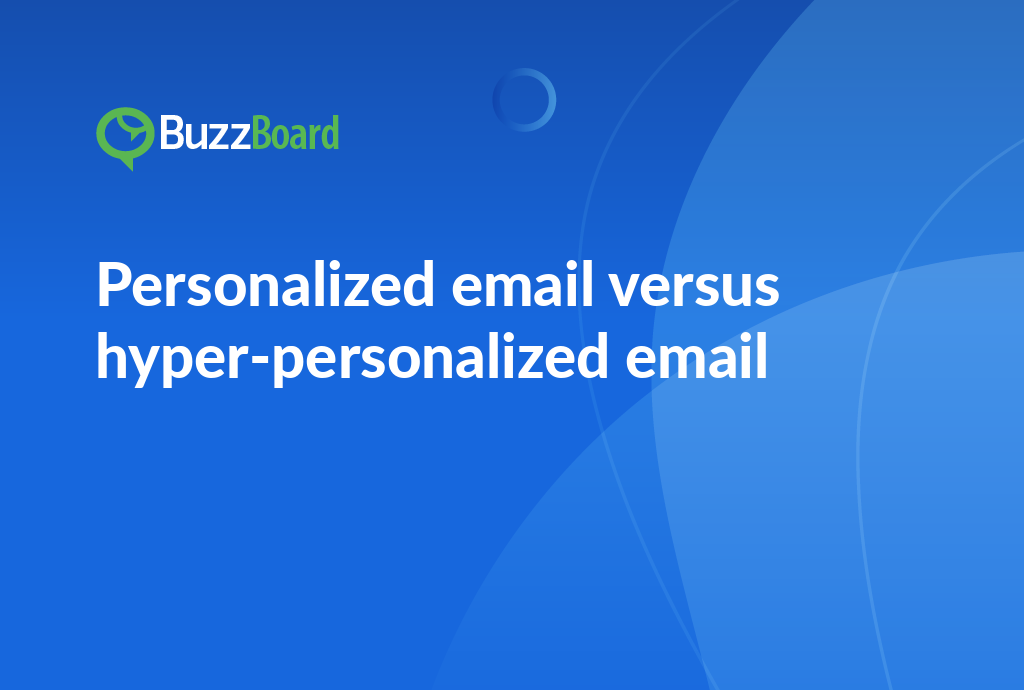Why Repurpose Content?
Repurposing content can be a game-changer for small businesses, allowing them to maximize their content’s potential and reach a wider audience. According to BuzzBoard, repurposing content involves reusing existing content in new and creative ways, such as turning blog posts into social media posts or transforming videos into infographics. By doing so, small businesses can reduce content creation costs, increase engagement, and drive more conversions. In this article, learn how to repurpose content effectively, including tips on identifying reusable content, adapting formats, and measuring success. Discover how to breathe new life into your content and get the most out of your marketing efforts.
Introduction to Repurposing Content for Small Businesses
In the highly competitive digital landscape, small businesses are consistently seeking strategies to optimize their content marketing efforts and enhance efficiency. One valuable tactic to achieve this goal is repurposing content. This offers a way to maximize the use of existing resources while engaging with a broader audience.
Content repurposing implies converting an existing content piece into other formats or platforms to gain maximum exposure. This approach not only amplifies your content’s visibility but enables you to target different audience segments. It reduces the time pressure associated with creating fresh content and enhances SEO value.
Repurposing content is a powerful strategy that can breathe new life into existing content, providing businesses with a multitude of benefits. For instance, a blog post can be transformed into a podcast episode, a series of social media posts, or infographics, offering new opportunities for audience interaction. Some individuals may prefer podcasts over reading lengthy articles, while others may find engaging social media content more appealing. By repurposing content, businesses can cater to diverse audience preferences, increasing the chances of resonating with a wider audience.
Implementing repurposing content strategies can significantly boost content marketing efficiency. By leveraging existing content, businesses no longer need to constantly develop fresh content ideas, thereby saving time and costs. This approach allows businesses to maximize the value of their content investments, ensuring that every piece of content is utilized to its full potential.
Moreover, repurposing content is not simply about re-using content, but strategically restructuring and re-aiming it for maximum effect. It requires a deep understanding of the target audience, their preferences, and the goals of the content. By repurposing content, businesses can tailor their message to specific audience segments, increasing the likelihood of engagement and conversion.
Digital marketing agency sales teams can leverage this method by proposing it as a viable strategy to their small business clients. By doing so, they can help their clients extract maximum value from their content investments, ultimately driving business growth and revenue. Repurposing content is a valuable service that agencies can offer to their clients, setting them apart from competitors and demonstrating their expertise in content marketing.
It’s essential to remember that repurposing content doesn’t translate to rehashing the same ideas, but presenting valuable insights in new, engaging ways to reach and resonate with a wider audience. This requires creativity, innovation, and a willingness to experiment with different formats and platforms. By doing so, businesses can breathe new life into their content, increasing its relevance, impact, and ROI.
Some benefits of repurposing content include:
- Increased content marketing efficiency: By leveraging existing content, businesses can save time and costs, and maximize the value of their content investments.
- Wider audience reach: Repurposing content allows businesses to cater to diverse audience preferences, increasing the chances of resonating with a wider audience.
- Improved engagement: By presenting valuable insights in new, engaging ways, businesses can increase audience engagement and conversion rates.
- Enhanced brand visibility: Repurposing content can help businesses increase their online visibility, drive more traffic to their website, and improve their search engine rankings.
- Cost-effective: Repurposing content is a cost-effective way to create new content, reducing the need for constant content creation and minimizing the risk of content fatigue.
Repurposing content is a powerful strategy that can help businesses maximize the value of their content investments, increase their online visibility, and drive business growth. By leveraging existing content, businesses can save time and costs, cater to diverse audience preferences, and present valuable insights in new, engaging ways. As digital marketing agency sales teams, it’s essential to propose repurposing content as a viable strategy to their small business clients, helping them extract maximum value from their content investments and drive business success.
The Strategy Behind Effective Content Repurposing and Its Impact on Marketing Efficiency
Content is a crucial component of any marketing strategy for small businesses. However, generating fresh and high-quality content can be a time-consuming and costly endeavor, which is why repurposing content has become an essential tactic for businesses looking to optimize their content marketing efforts. According to industry professionals, repurposing content can significantly enhance content marketing efficacy, enabling small businesses to maximize their resources and achieve superior outcomes.
Repurposing content involves modifying existing content to cater to a different goal or audience. This is not simply rehashing identical material, but rather creatively utilizing it to attract and engage novel customer segments. By repurposing content, small businesses can maximize the use of content they already possess, saving time and resources that would otherwise be spent crafting new content. This approach also allows businesses to breathe new life into old content, making it relevant and engaging to new audiences.
To repurpose content effectively, small businesses must employ efficient strategies. The first step is to identify the top-performing content – material that resonated with your audience and elicited a strong response. This could be a blog post, social media post, or email campaign that drove significant engagement or conversions. Once you’ve identified your top-performing content, evaluate distinct platforms where this content could be leveraged effectively.
For example, a blog post can be repurposed into a podcast, infographic, social media snippets, or a webinar, thereby reaching a broader audience and enhancing your digital footprint. A social media post can be transformed into a video, email newsletter, or even a paid advertising campaign. By repurposing content, small businesses can reach new audiences, increase engagement, and drive conversions.
Repurposing content also aids in reinforcing the brand message, as recurrent exposure can result in improved audience comprehension and retention. When customers are repeatedly exposed to a consistent brand message, they are more likely to remember it and associate it with your business. This can lead to increased brand loyalty, customer retention, and ultimately, revenue growth.
Furthermore, repurposing content aligns with the algorithmic preferences of search engines, bolstering SEO performance and amplifying organic reach. By repurposing content, small businesses can increase their online visibility, drive more traffic to their website, and improve their search engine rankings.
In conclusion, content repurposing is a revolutionary tool for small businesses aiming to make their marketing endeavors more productive and impactful. By repurposing content, small businesses can maximize their resources, reach new audiences, reinforce their brand message, and improve their SEO performance. To get started, small businesses should explore these proven strategies to repurpose their content effectively, and elevate their digital marketing to unprecedented levels.
Some actionable tips for repurposing content include:
- Identify your top-performing content and evaluate its potential for repurposing
- Determine the goals and objectives for each repurposed piece of content
- Use a variety of formats, such as video, audio, and written content, to reach different audiences
- Repurpose content for different platforms, such as social media, email, and paid advertising
- Use attention-grabbing headlines and compelling visuals to make repurposed content stand out
- Monitor and analyze the performance of repurposed content to identify areas for improvement
- Continuously create and repurpose new content to keep your audience engaged and interested
By following these tips and incorporating content repurposing into their marketing strategy, small businesses can achieve greater success and reach new heights in the digital marketing landscape.
Practical Ways of Implementing Repurposing Content Strategies for Small Businesses
Repurposing content strategies can be a transformative approach for small businesses seeking to optimize their content marketing efficiency and maximize their content’s potential. At its core, content repurposing involves creatively revamping existing content into different formats to reach new audiences, revisit vital topics, and breathe new life into stale content. By doing so, businesses can effectively reuse and recycle their content, minimizing the need to constantly start from scratch and reducing the time, effort, and resources required to create new content.
One effective strategy for repurposing content is converting blog posts into infographics. Infographics, featuring engaging designs and visual graphics, can captivate attention, present complex information in an easily understandable form, and be extensively shared across various social networking platforms. This can amplify the content’s reach, significantly enhance its potential to go viral, and provide a fresh perspective on a topic. For instance, a blog post on the benefits of a particular software can be transformed into an infographic highlighting key features, statistics, and testimonials, making it more engaging and shareable.
Another innovative method for repurposing content is transforming podcast interviews into blog posts or vice versa. If your organization hosts or participates in podcasts, you’ve already got a wealth of content waiting to be repurposed. By transcribing the audio, editing it into a blog post, and optimizing it for SEO, you can create a brand-new piece of content that can be shared across multiple channels. This approach not only extends the life of your podcast content but also provides a new way to engage with your audience and attract new listeners.
Content repurposing can also involve creating an e-book from a series of related blog posts. This approach not only caters to your existing audience but also unlocks opportunities for e-book marketing. By compiling a collection of blog posts on a specific topic, you can create a comprehensive resource that provides value to your audience and establishes your business as a thought leader in the industry. E-books can be shared across various channels, including email marketing campaigns, social media, and paid advertising, providing a new way to engage with your audience and drive conversions.
In addition to these strategies, content repurposing can also involve transforming videos into blog posts, social media posts into email newsletters, or even creating a webinar series from a series of blog posts. The possibilities are endless, and the key is to identify the most effective ways to repurpose your content to achieve your marketing goals.
In summary, repurposing content is a powerful approach that supports the maxim, “Work smarter, not harder.” By creatively repurposing your existing content, you can maximize its utility, reduce the need to constantly start from scratch, and achieve greater efficiency in your content marketing efforts. By adopting a repurposing strategy, small businesses can unlock new opportunities for growth, engagement, and conversions, ultimately driving success in their marketing efforts.
Success Stories and Real-Life Examples of Businesses Getting the Most Out of Their Content
Content marketing is often misunderstood as solely focusing on creating new content, but in reality, it’s about leveraging existing content effectively to maximize its impact. A prime example of this strategy’s success can be seen in the story of River Pools and Spas, a small business that revolutionized their sales and reputation in the pool industry by successfully repurposing their content.
River Pools and Spas recognized the importance of quality content and opted for in-depth buyer’s guides instead of shallow blog posts. These comprehensive pieces helped potential customers gain a deeper understanding of the pool purchasing process, addressing their concerns and questions in a clear and concise manner. By creating high-quality, informative content, River Pools and Spas established themselves as thought leaders in the industry, building trust and credibility with their target audience.
The real magic happened when they repurposed their original content into various formats, including blog posts, videos, infographics, and webinars. This strategic approach allowed them to reach a wider audience, increase engagement, and drive conversions. By repurposing their content, River Pools and Spas were able to:
- Increase their online presence and visibility
- Drive more traffic to their website
- Boost their lead generation by an astonishing 300%
- Enhance their reputation and credibility in the industry
This remarkable success story serves as a shining example of the power of repurposing content for small businesses. By leveraging their existing content in creative and innovative ways, River Pools and Spas were able to achieve impressive results while optimizing their resources.
For digital marketing agencies working with small and local businesses, River Pools and Spas’ strategy can be a valuable inspiration. By adopting efficient content marketing practices like repurposing content, agencies can help their clients achieve similar results. This approach can help agencies:
- Maximize their clients’ content ROI
- Increase their clients’ online presence and visibility
- Drive more leads and conversions
- Enhance their clients’ reputation and credibility in their respective industries
By embracing the power of repurposing content, digital marketing agencies can help their small and local business clients achieve remarkable results, drive growth, and establish themselves as industry leaders.
Benefits and Potential Challenges in Repurposing Content for Small Businesses
Repurposing content has become a vital strategy for small businesses, enabling them to optimize their content marketing efforts and alleviate the pressure of constantly producing fresh, high-quality material. In today’s fast-paced digital landscape, repurposing content offers numerous advantages that can help businesses streamline their content creation process, expand their reach, and boost their online presence.
One of the primary benefits of repurposing content is that it allows businesses to extend the lifespan of their existing content, minimizing the time and resources required to create new material. This approach enables companies to breathe new life into their old content, making it relevant and engaging to new audience groups who may not have seen the original format. By repurposing content, businesses can also tap into new audience segments, increasing their visibility and reach.
Another significant advantage of repurposing content is that it enhances the odds of it being discovered and shared across different platforms. When content is repurposed, it can be adapted to fit various formats, such as social media, blog posts, videos, or podcasts, making it more likely to be discovered by new audiences. This, in turn, can lead to increased engagement, shares, and mentions, which can positively impact SEO rankings by providing multiple opportunities for target keywords to appear in search results.
However, it’s essential to recognize that repurposing content requires careful planning, execution, and attention to detail to avoid common pitfalls. If not done properly, repurposed content can appear stale, lack originality, or fail to resonate with audiences. To overcome this challenge, businesses must infuse fresh insights, perspectives, and perspectives into their repurposed content, ensuring that it remains relevant, engaging, and valuable to their target audience.
To achieve success in repurposing content, businesses must adopt a thoughtful and strategic approach. This involves evaluating their existing content, identifying opportunities for repurposing, and planning how to adapt it for different platforms and audiences. It’s also crucial to understand the diverse preferences and behaviors of their target audience, as well as the unique characteristics of each platform, to ensure that their repurposed content resonates with their audience.
Repurposing content is a powerful strategy for small businesses looking to optimize their content marketing efforts and stay ahead in the competitive digital landscape. By understanding the benefits and challenges of repurposing content, businesses can breathe new life into their existing material, expand their reach, and boost their online presence. Remember, repurposing content is an art that requires creativity, strategy, and attention to detail. By mastering this art, businesses can ensure success in their venture and achieve their content marketing goals.
Conclusion
In today’s fast-paced digital landscape, small businesses are constantly looking for ways to maximize their online presence without breaking the bank. Repurposing content is a game-changer for small businesses, allowing them to breathe new life into existing content and reach a wider audience without sacrificing quality or resources. By applying the art of repurposing content, small businesses can:
- Reduce content creation costs and increase efficiency
- Expand their reach and engagement across multiple platforms
- Improve content discoverability and SEO
- Enhance their brand’s consistency and professionalism
- Stretch their marketing budget further
By adopting a repurposing content strategy, small businesses can do more with less, achieving greater impact and ROI from their marketing efforts. Whether it’s turning a blog post into a social media series, transforming a video into a podcast, or repurposing a webinar into a downloadable guide, the possibilities are endless. By embracing the art of repurposing content, small businesses can level the playing field with larger competitors and establish themselves as thought leaders in their industry.









